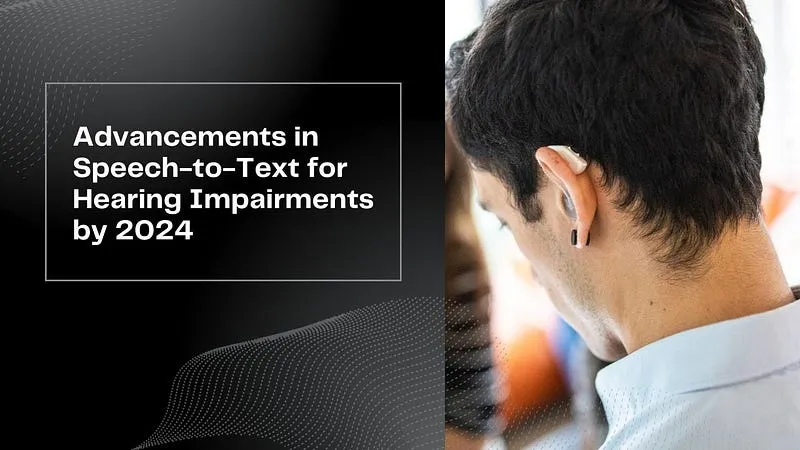The Future of Speech-to-Text Solutions for Hearing Impairments in 2024
In recent years, advancements in speech-to-text technology have revolutionized communication for individuals with hearing impairments. These solutions have significantly enhanced accessibility, allowing users to convert spoken language into text in real-time. As we delve into 2024, the landscape of speech-to-text solutions continues to evolve, promising even greater benefits for the hearing impaired community.
The Evolution of Speech-to-Text Solutions
Speech-to-text technology has undergone remarkable advancements, driven by breakthroughs in artificial intelligence and machine learning algorithms. These innovations have empowered speech recognition systems to accurately transcribe spoken language with unprecedented precision. In 2024, we anticipate further improvements in accuracy, speed, and customization, making speech-to-text solutions more seamless and effective for users with hearing impairments.
Enhanced Accessibility and Inclusivity
One of the primary benefits of speech-to-text solutions is their ability to enhance accessibility and inclusivity. By providing real-time transcriptions of spoken content, these tools enable individuals with hearing impairments to participate fully in conversations, meetings, lectures, and various other communication scenarios. Moreover, speech-to-text technology promotes inclusivity by breaking down language barriers and accommodating diverse linguistic backgrounds.
Also Read: How to Use Speech-to-Text Transcription to Improve Your Productivity?
The Role of Advanced Speech-to-Text Solutions
In the quest to improve accessibility for individuals with hearing impairments, advanced speech-to-text solutions play a pivotal role. These solutions leverage cutting-edge AI and machine learning algorithms to deliver highly accurate transcriptions in real-time, ensuring clear and effective communication for users. Moreover, they offer customizable features that cater to individual preferences and requirements, further enhancing the user experience.
Why Penn.ai Stands Out
Penn.ai distinguishes itself as a leading speech-to-text solution for hearing impairments due to several key factors:
- Accuracy and Reliability: Our advanced AI models ensure exceptional accuracy and reliability in transcribing spoken language, minimizing errors and misunderstandings.
- Customization and Adaptability: Penn.ai offers customizable features that cater to individual preferences and requirements, allowing users to tailor the transcription experience to their specific needs.
- User-Friendly Interface: With an intuitive user interface, Penn.ai is easy to navigate and use, making it accessible to individuals with varying levels of technological proficiency.
- Continuous Improvement: We are committed to ongoing research and development, continuously refining our algorithms to deliver the best possible user experience and stay ahead of emerging trends in speech-to-text technology.
Conclusion
As we look ahead to the future of speech-to-text solutions in 2024 and beyond, the prospects for individuals with hearing impairments are brighter than ever. With continued advancements in AI technology and a growing emphasis on accessibility and inclusivity, speech-to-text solutions like Penn.ai are poised to play a pivotal role in transforming communication for the better. By harnessing the power of innovation, we can create a more inclusive society where everyone has equal opportunities to engage, connect, and thrive.
